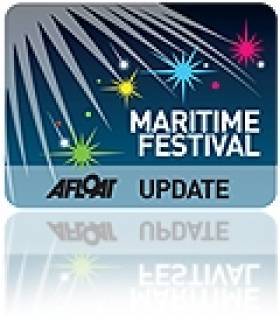Displaying items by tag: Kilmore Quay Seafood Festival
Sun, Sand and Sail at the Kilmore Quay Seafood Festival
The Kilmore Quay Seafood Festival starts this evening, now in its 42nd year, the four-day festival is surrounded by the culinary delights of locally caught fresh seafood, writes Jehan Ashmore.
In addition festival-goers can take part in the varied programme which caters for all age-groups. At 7.30pm tonight is the opening Grand Festival Parade featuring a 'Visitors From the Deep' float and Wexford's Community Samba Band 'Bloco de Fud Este'.
The festival will include a Seafood Platter Prize Competition, a children's creative art-workshop making 'Fish Kite-Windsocks', a Friday Fish Market with reduced prices and chefs cooking culinary dishes for sample-tastings and a Beach Band Barbecue.
On both the Saturday and Sunday there is the Tuskar Marine Modellors with their model boats and ships exhibition held in the Stella Maris Centre
and the Quay Times exhibition. Also throughout the weekend the Festival Arts Exhibition will be open in the RNLI Lifeboat House, noting Kilmore Quay is the first Irish lifeboat station to have the new Tamar-class lifeboat, the RNLB Killarney which can be viewed at its moorings.
On Saturday starting at 2.30pm is the "The Celtic Link Challenge" - Yacht Race when boats leave the marina at 3pm and return two hours later. The winners trophy will be presented in the Bird Rock Cafe at 6pm. If adverse weather conditions prevail the race will be re-scheduled for 2.30pm on the Sunday - weather permitting! For more information contact 086 2576862 and www.kilmorequayboatclub.com
To view the complete list of the festival programme, noting certain events and activities require an admission charge click HERE
- RNLI
- Tamarclass lifeboat
- Maritime Festivals
- Kilmore Quay Seafood Festival
- Kilmore Quay Marina
- Irish Seafood Festivals
- Stella Maris Centre
- RNLI Lifeboats
- RNLI Killarney
- Tuskar Marine Modellors
- Boat Models
- Seafood Platter
- Celtic Link ChallengeYacht Race
- Kilmore Quay Boat Club
- Fish Markets
- Beach Band Barbecue
- Celtic Link Ferries






























































